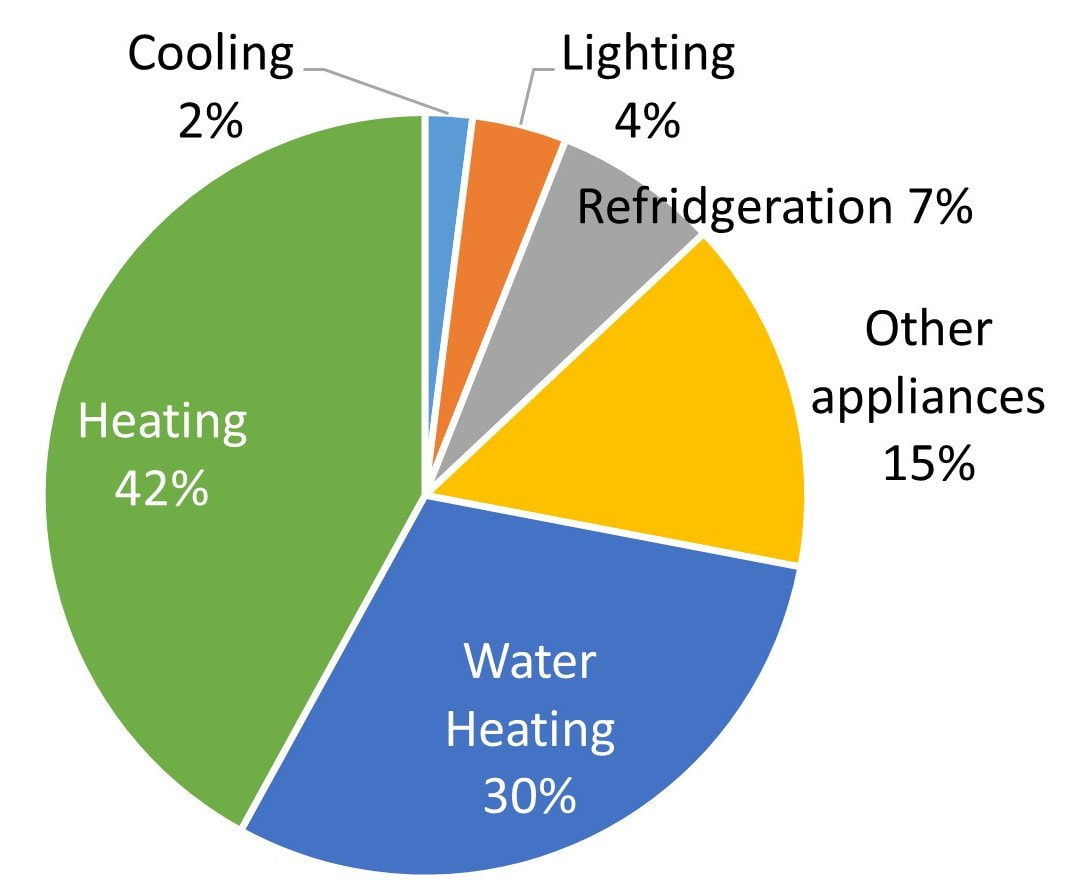Eastern Climate Action Melbourne
Applying home energy advice to your home
|
The energy used for houses is a significant amount. Residential buildings are responsible for around 24% of overall electricity use and 12% of total carbon emissions in Australia.
Replacing a fossil fuel machine you use with an electric machine in your home saves money and reduces GHG pollution - and lets you tap into that abundant energy to be more comfortable and more active. The following is a list of actions you can do to save energy, emissions and money. The order you do this in will depend on what you value most. You might do solar first because this will save the most money and emissions. But ceiling insulation makes the house warmer in winter and cooler in summer (careful - a few details need to be considered on this action.) Or replacing a methane gas appliance with an electric appliance reduces your demand for this fossil fuel in your home. |
When all of the actions are implemented, or even most of them, you should find you are saving a substantial amount of money that really adds up over time. Savings from solar might even pay for some other actions to be done.
And of course they most immediate thing you can do to reduce our electricity GHG emissions is buy green power now, which is solar and wind energy generated somewhere else.
And of course they most immediate thing you can do to reduce our electricity GHG emissions is buy green power now, which is solar and wind energy generated somewhere else.
- Install solar.
Solar has a great payback. It also supports the nation to transition to a renewable grid. Make sure you use a good supplier and have the design checked so it doesn’t get shaded. Install the inverter in a cool position like a south wall.
Good solar will monitor energy ans solar use, usually to a phone app. Energy monitoring and control: Real-time monitoring of energy use in your home can save you 10-15% on your energy bill. - Change the lights to LED
Lights used the most and for long periods should be changed first - such as kitchen and lounge. If the light is used rarely it doesn’t need changing until it fails. LED downlights save 80% of the energy used by incandescent lights. Using a freestanding lamp in a room like the lounge can also be a good way to create a nice mood and save energy. - Insulation
Top up ceiling insulation to save on heating, and this also helps in summer cooling. To help summer cooling also shade from east and especially west sun to prevent summer overheating. Install blinds to manage summer sun or a veranda or external shade. Install floor insulation if there is no carpet. Floor insulation will help improve comfort and save heating costs. Insulate walls if practical and within the budget. Insulate walls if renovating.
Fully insulating your home can cut your heating use by 80% - that will change the type of need for space heating and cooling, something to quickly change the room temperature to a comfortable level that will only slowly change - see below. - Hot Water Service
Hot water accounts for up to one third of energy bills. Replace the HWS with a heat pump HWS when it fails. In the meantime, ensure you have a low flow shower head. (Solar power PV will help reduce hot water costs if the service is electric and heating when the sun shines.) - Draught proofing
Fixing draughts improves comfort and can cut winter heat loss by up to 25%. It can also add 2 stars to your home’s energy rating.
External doors need weatherstripping around the jamb and at the base (doorflap). Install a rangehood in the kitchen if there is an older style exhaust fan. Use a draught stopper over the ceiling exhaust fans in the kitchen and bathrooms. Check for gaps around doors and windows where architraves meets the plaster and caulk them up. - Heating and Cooling
Reverse Cycle air conditioners (heat pumps) are the most efficient heater and cooler you can have - you can save up to 60% on bills compared to ducted gas heating. To save on heating and cooling you can zone the home. A split system in a bedroom can be a good option for those on a tight budget so the whole house is not conditioned. Ducted systems that condition the whole house will cost more to run. - Cooking and Appliances
Efficient appliances and induction cooktops use half the energy of standard electrical appliances and gas. Induction cooking is fast and does not affect indoor air quality like gas does. - Glazing
Upgrade to double or triple glazing to reduce heat loss and heat gain through windows and doors by up to 85%. If renovating or building, design window location and size carefully. Windows on the north will help passive heating. Windows on the east and west should be designed with winter and summer sun angles considered.

